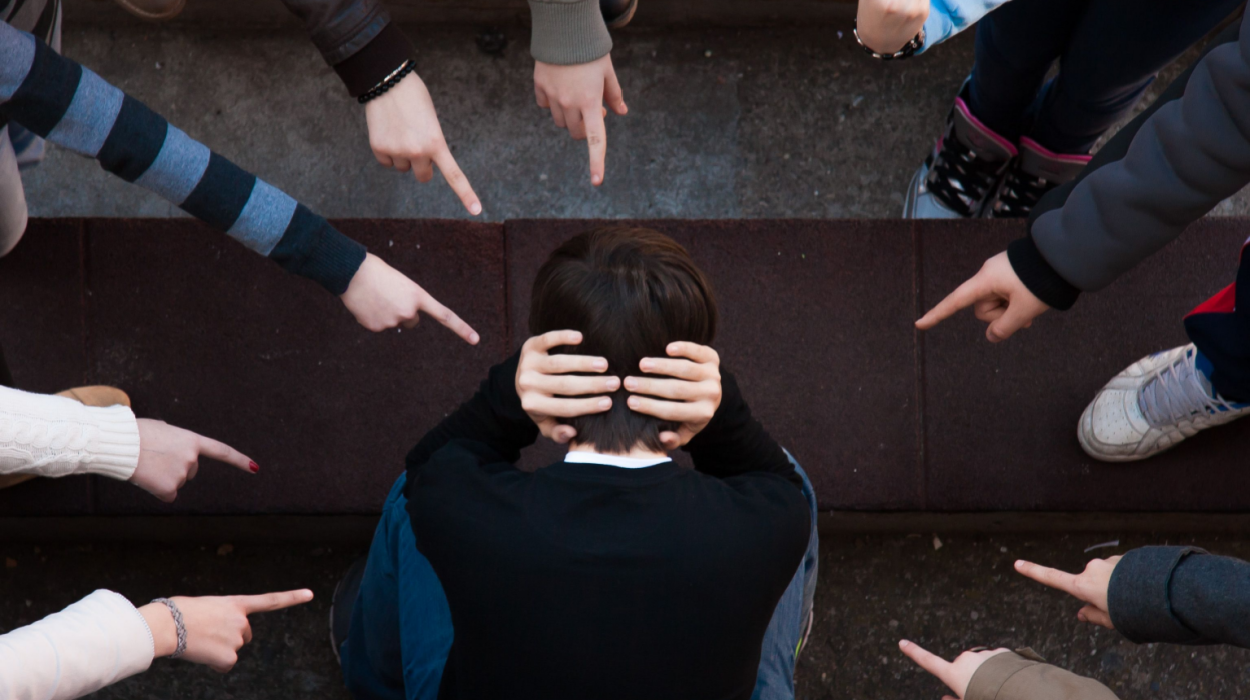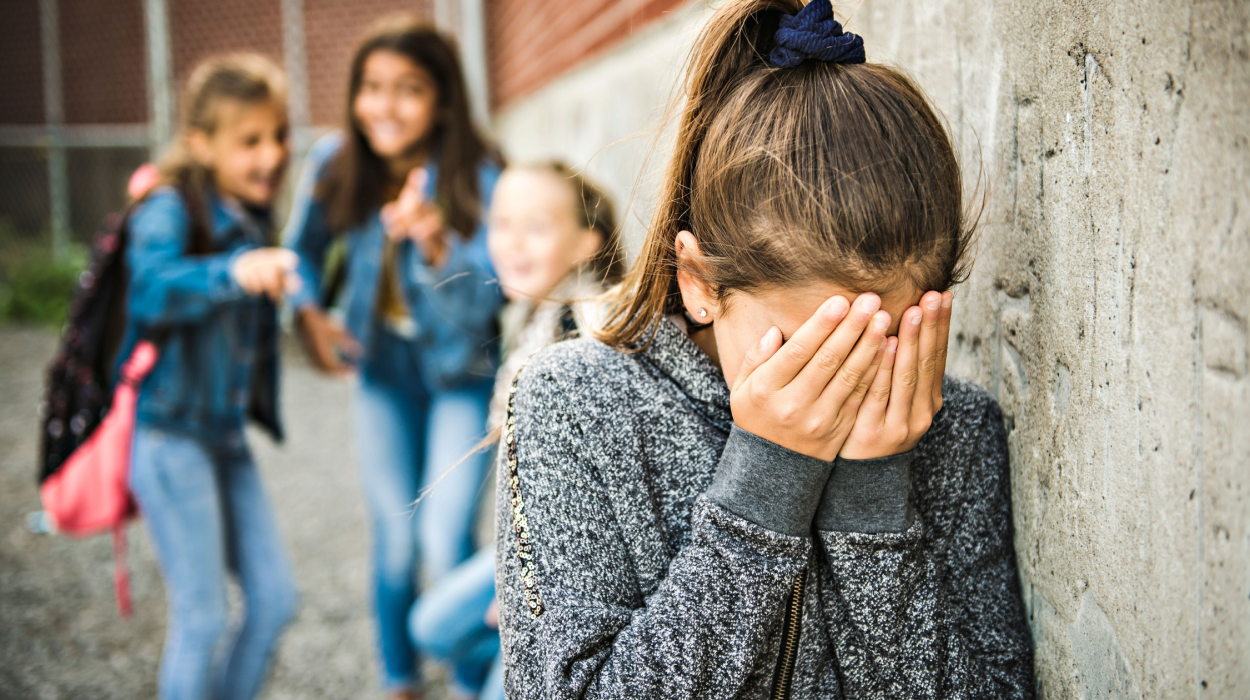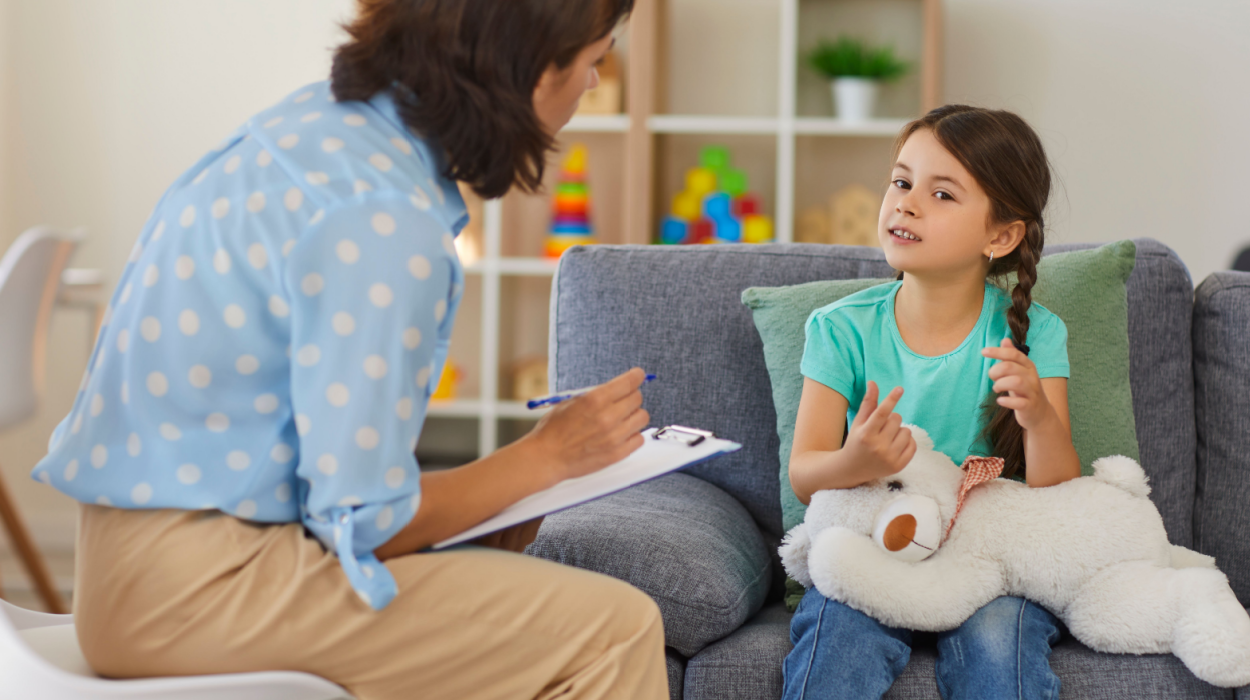 Evidence Based
Evidence Based
Evidence Based
This article is objectively based on relevant scientific literature, written by experienced medical writers, and fact-checked by a team of degreed medical experts.
Our team of registered dietitian nutritionists and licensed medical professionals seek to remain objective and unbiased while preserving the integrity of any scientific debate.
The articles contain evidence-based references from approved scientific sites. The numbers* in parentheses (*1,2,3) will take you to clickable links to our reputable sources.
Childhood Social Anxiety: Symptoms & How To Help 2024

Childhood social anxiety is a form of anxiety in which intense fear of social situations can prevent the child from participating in social gatherings and public performances. With social anxiety, a child fears public embarrassment, may envision “worst case scenarios,” and perseverates on social situations that have already happened.
Children who have been bullied or humiliated in their families or at school are more prone to experience social anxiety. Certain forms of therapy and parenting techniques can help children overcome social anxiety. This article will cover some of these tactics.
Childhood Social Anxiety
- Childhood social anxiety presents as extreme fear in social situations in which the child fears public ridicule or embarrassment.
- Symptoms of childhood social anxiety include intense fear of social situations, avoidance, obsessive or worrying thoughts, analysis of past performances or social interactions, expecting the worst case scenario, and physical symptoms of nervousness such as blushing, shaking, sweating, or digestive upset.
- Children who have been ridiculed, bullied, rejected, or humiliated by peers, teachers or family members may be more prone to social anxiety.
- Parenting techniques in coping and reassurance, as well as professional therapy, can help children overcome social anxiety.
What Is Childhood Social Anxiety?

Childhood social anxiety, or social phobia,[1] is a common occurrence in children in which they experience ongoing fear and avoidance of social situations. Children with social anxiety may dread social interactions or public performances, anticipating embarrassment, shame, and other uncomfortable feelings.
Children with social anxiety can feel distressed and develop physical symptoms just by thinking about having to engage socially or perform publicly. In order for social anxiety to qualify as an official diagnosis, the anxiety must impede a child’s ability to perform daily activities.
As the child gets older, they may be able to acknowledge that their fear is “unreasonable,” however, a young child may fear worst case scenarios and truly believe they will happen. Having a social anxiety disorder in childhood is not uncommon. Many children develop anxiety in social situations due to the rigorous demands of school, home life, and peer pressure.
Symptoms Of Social Anxiety In Children
Social anxiety childhood symptoms can be broken up into emotional and physical symptoms. Furthermore, anxiety can manifest in different ways for different children, making them apprehensive not only about attending school or parties, but specific social interactions.
For example, kids with social anxiety[2] may struggle with eating in public, making eye contact, using public bathrooms, initiating conversations, and speaking publicly, among other behavioral symptoms.
Emotional symptoms of social anxiety include:
- Fear of judgment, ridicule, or embarrassment in social situations.
- Fear of new people/strangers.
- Avoidance of people, places, or experiences.
- Perseverating about social interactions after the interactions.
- Fear of hurting, disappointing, or annoying other people.
- Anticipating worst case scenarios.
- Fear of experiencing physical symptoms that others will notice, such as shaking, blushing, or sweating.
- Ongoing self judgment and criticism.
Physical symptoms of social anxiety include:
- Heart palpitations/fluttering/rapid heart beat.
- Changes in breathing.
- Digestive upset and/or diarrhea.
- Feeling lightheaded or dizzy.
- Sweating.
- Body aches.
Can Childhood Trauma Cause Social Anxiety?
Can childhood trauma cause social anxiety? Absolutely.
Social anxiety stemming from childhood trauma is very common. Any form of trauma[3] (such as physical or sexual abuse) can cause a child to develop social anxiety. However, children who have been traumatized by repeated ridicule, bullying, or embarrassment from family members, other kids, or teachers, may be particularly prone to social anxiety.
Children who have experienced domestic conflicts, such as witnessing their parents get divorced[4] or those who have experienced domestic violence may also develop social anxiety.
Although there are many different types of therapy, a therapy aimed at trauma specifically, such as childhood trauma therapy, may be extremely helpful in addressing the trauma which led to the development of social anxiety.
Other Causes Of Social Anxiety In Children
Although some children may have a deeper root, like trauma, to their anxiety, other children may develop social anxiety as an extension of a previous anxiety.
For example, a child with separation anxiety (experiencing anxiety when separated from a loved one) can also develop social anxiety. In fact, being separated from or abandoned by a loved one may trigger social anxiety.
Also, in children of anxious parents, they may pick up on or internalize their parents’ anxiety. For example, if a parent reacts to non-threatening events as if they were threats, a child may learn to do the same, or if a parent has difficulty coping with stress, the child may develop the same difficulty.
Other causes of social anxiety include repeated bullying, teasing, embarrassment, and ridicule by loved ones or at school.
3 Tips For Helping Children With Social Anxiety

If your child has social anxiety, rest assured there are many modalities and approaches that can help children overcome social anxiety. These tips may not only help your child, but help others with social anxiety.
Therapy
Social anxiety is more than being shy. It can be crippling for children (and adults). Social anxiety is an anxiety disorder, and can be just as difficult to struggle with as other types of mental health conditions, such as depression or post traumatic stress disorder. Therapy is often effective for social anxiety treatment.
If you don’t have a therapist in your area, review options for the best online counseling services for kids and read the Talkspace reviews to see if this may be the right fit for your child.
A therapist may refer you to a psychiatrist who can prescribe medication,[5] if necessary, as medication can be used as an adjunct to therapy.
Nutrition
Nutrition plays a vital role in mental health. Certain foods and eating styles can worsen anxiety. For example, sugar consumption[6] can increase anxiety. Focusing on whole, unprocessed foods and minimizing sugar may help improve anxiety and mood.
Additionally, ensuring your child’s blood sugar is balanced can also make a huge difference in anxiety. When blood sugar is low, cortisol, the stress hormone, rises. In other words, the same hormones we release when we’re anxious are the same ones that are released when our blood sugar is low.
Feed your children meals and snacks that are balanced (they have protein, healthy fat, and carbs) and consider other natural remedies for anxiety.
Grounding Techniques
Social anxiety will not be resolved overnight (this is why nutrition and therapy are so important), however there are things you can do to calm your child down in the present moment when they are feeling anxious.
Reassure them that they are safe and that they don’t have to do anything they don’t want to do.
Deep breathing will calm anxiety almost immediately. Showing them how to initiate deep breathing is another great way to help them stay grounded.
Teach the child to follow the fear to the end. Talk with the child to see if they can articulate their fear. To adults, the fear may seem irrational, but to younger children, it may feel all-consuming. Once they articulate their fear, help them “follow the fear to the end.”
This means getting them to articulate what they think will happen (worst case scenario) and continuing to ask them, “And then what?”
A child might say, “I’m afraid if I go to school, I’ll start sweating.” And then you would say, “Okay. And then what?” And then the child might say, “And then other kids will see and laugh at me.” And then you would say, “Okay. And then what?” And so on. By continuing to follow the fear to the end, a child can learn to see that even a “worst case scenario” is not that bad.
Therapy And Medication

Medical prescribers and mental health professionals can determine whether medication is appropriate for the treatment of a social anxiety disorder or if therapy is preferable (or both).
Every child will have a unique case with unique symptoms, and the severity of the anxiety will help a professional determine the best course of treatment. If the anxiety is particularly bad, a doctor may prescribe medication initially to get the anxiety under control, but then help the child wean off it.
A thorough mental evaluation and family history should be conducted prior to treatment to establish the cause of social anxiety, as this may help determine what treatment is best.
For example, if a child was traumatized in the home, it may be most beneficial for them to undergo trauma-directed therapy, such as EMDR,[7] whereas if no trauma is uncovered, then a different form of therapy, like cognitive behavioral therapy, may be prescribed.
Conclusion
Childhood social anxiety is a common anxiety disorder children can develop as a result of trauma, bullying, or ridicule. Domestic disruptions such as divorce or domestic abuse can also contribute to the development of social anxiety.
Parental support, grounding techniques, therapy, nutrition, and medication can all be explored as possible means to alleviate childhood anxiety. These methods can also alleviate anxiety in young adults. A doctor may prescribe a combination of therapy and medication for one child, but only therapy for another child.
Frequently Asked Questions
Social anxiety, or social phobia, is more persistent than shyness and, in order for it to be classified as social anxiety, the anxiety must interfere with daily functioning.
Only an MD or LMHP can make medication determinations for mental disorders and prescribe medication. It will be on a case-by-case basis.
No. A child’s anxiety is not always linked to trauma. Social anxiety or and other anxiety disorders can develop as a result of trauma, but not all people who experience trauma will develop social anxiety.
You can call your insurance company who can give you a list of providers in your network, or use online resources such as Talkspace to get paired with a therapist.
+ 7 sources
Health Canal avoids using tertiary references. We have strict sourcing guidelines and rely on peer-reviewed studies, academic researches from medical associations and institutions. To ensure the accuracy of articles in Health Canal, you can read more about the editorial process here
- Hitchcock, C.A., Chavira, D.A. and Stein, M.B. (2009). Recent findings in social phobia among children and adolescents. The Israel journal of psychiatry and related sciences, [online] 46(1), pp.34–44. Available at: https://www.ncbi.nlm.nih.gov/pmc/articles/PMC2925835/#:~:text=Child%20social%20anxiety%20(SAD)%20also,in%20significant%20avoidance%20or%20distress.
- National Institute of Mental Health (NIMH). (2022). Social Anxiety Disorder: More Than Just Shyness. [online] Available at: https://www.nimh.nih.gov/health/publications/social-anxiety-disorder-more-than-just-shyness.
- Natália Kaščáková, Furstova, J., Jozef Hasto, Andrea Madarasova Geckova and Tavel, P. (2020). The Unholy Trinity: Childhood Trauma, Adulthood Anxiety, and Long-Term Pain. International Journal of Environmental Research and Public Health, [online] 17(2), pp.414–414. doi:https://doi.org/10.3390/ijerph17020414.
- Schaan, V., Schulz, A., Hartmut Schächinger and Claus Vögele (2019). Parental divorce is associated with an increased risk to develop mental disorders in women. Journal of Affective Disorders, [online] 257, pp.91–99. doi:https://doi.org/10.1016/j.jad.2019.06.071.
- Hitchcock, C.A., Chavira, D.A. and Stein, M.B. (2009). Recent findings in social phobia among children and adolescents. The Israel journal of psychiatry and related sciences, [online] 46(1), pp.34–44. Available at: https://www.ncbi.nlm.nih.gov/pmc/articles/PMC2925835/.
- Kose, J., Cheung, A., Léopold Fezeu, Sandrine Péneau, Debras, C., Touvier, M., Serge Hercberg, Galan, P. and Andreeva, V.A. (2021). A Comparison of Sugar Intake between Individuals with High and Low Trait Anxiety: Results from the NutriNet-Santé Study. Nutrients, [online] 13(5), pp.1526–1526. doi:https://doi.org/10.3390/nu13051526.
- Va.gov. (2014). VA.gov | Veterans Affairs. [online] Available at: https://www.ptsd.va.gov/understand_tx/emdr.asp.



